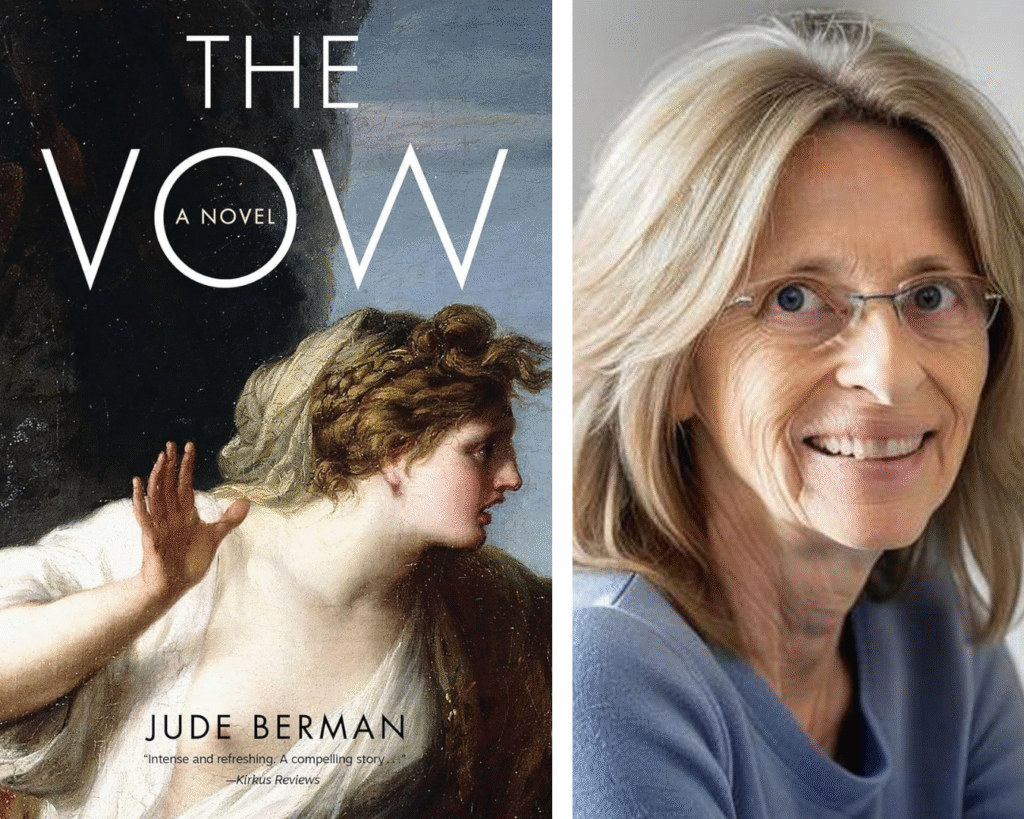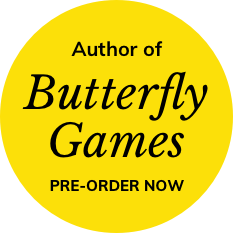Q&A with Jude Berman: On The Vow, Angelica Kauffman, and Reimagining a Forgotten Icon
Posted on May 8, 2025 in Favorite Authors

This month, I had the absolute pleasure of interviewing Jude Berman—historian, novelist, and all-around master of time travel (of the literary kind, that is). Her novel The Vow reimagines the life of 18th-century artist Angelica Kauffman, a name that deserves far more spotlight than it gets.
What follows is a warm, fascinating, and occasionally surprising conversation about art, ambition, and what it means to rewrite the past—just a little.
Q: First off, Jude—why Angelica Kauffman? What drew you to her story?
Jude: I stumbled across Angelica many years ago through a series of mystical coincidences and was immediately drawn in. She was talented and highly ambitious, and somehow managed to rise to prominence in a man’s world without becoming a cautionary tale. Her life was filled with drama—rags-to-riches fame, scandal, heartbreak—and yet, like so many early women artists, she was lost to history until quite recently. Even now most people don’t know who she is. I want to change that.
Q: The Vow reimagines parts of Angelica’s life. Where did you let fiction take the wheel?
Jude: For me, it’s a point of honor to stick closely to the known facts. Over the centuries, historians have come up with their own interpretations, and in the 19th century—before Angelica was forgotten—a bestseller was written about her life. When I read it, and also read the actual letters she wrote to Wolfgang von Goethe, I was convinced that book got it wrong. So I set out to retell her story—still as fiction but reflecting what I believe to be closer to the truth of her heart.
Q: Historical fiction can be a tricky balancing act—how do you decide how much creative license to take?
Jude: It comes down to emotional truth. I wasn’t interested in writing a textbook—I wanted to explore what it felt like to be Angelica Kauffman: a woman with talent and ambition, navigating the art world, love, and the weight of expectations and then growing into maturity. I stuck with all the known facts of her life but let my creativity flow when it came to describing her inner world.
Q: Your descriptions of 18th-century London and Rome are gorgeously vivid. How deep did you dive into the research rabbit hole?
Jude: I did a lot of digging! And I have to say, my doctorate in educational research came in handy. I started pre-Internet, and more and more information became available as I was writing. I was constantly finding ways to pop in one or another detail as I discovered it. I probably know more about the price of pigments in 1775 than anyone needs to!
Q: Angelica was one of the founding members of the Royal Academy of Arts—a pretty big deal. Did you feel pressure to do her justice?
Jude: Absolutely. She was a trailblazer, and I didn’t want to flatten her into a sentimental figurehead. She was complicated. She made bold choices and also had to face disappointments and compromise. I wanted to honor both her strengths and her vulnerabilities.
Q: The novel explores how men in Angelica’s life tried to control or lay claim to her body, time, and talent. How did you approach writing these power dynamics?
Jude: Angelica lived in a world where men held virtually all the institutional and personal power. The law didn’t even permit a married woman to own her own paintings. Men naturally assumed they had access to Angelica—professionally, romantically, spiritually. I think it’s hard for women—especially younger women—today to imagine living with those constraints. I tried to show how the power dynamics of her time shaped her decisions, including the vows she made to herself and others.
Q: How did you balance portraying Angelica’s internal world with the historical record?
Jude: That’s one of the joys—and challenges—of historical fiction. The public record tells us where she lived, what she painted, whom she associated with. But her inner world? That’s an invisible layer. I leaned on her letters because they reflected her own thoughts. Her mind was, in many ways, her real canvas. I also drew on my own experience as an artist, especially with respect to how colors affect us.
Q: If Angelica were alive today, what do you think she’d make of The Vow?
Jude: I like to think she’d be intrigued—and maybe flattered. She might raise a skeptical eyebrow at some of the more speculative moments, but she was a portraitist, after all. She understood that every portrait—written or painted—blends truth and interpretation.
Q: Finally, what’s one thing you hope readers take away from The Vow?
Jude: That history isn’t just a list of dates and names—it’s full of beating hearts and difficult choices. And that women like Angelica Kauffman weren’t just muses or lovers or wives in a world of men. They were pioneers, and they can live on through our remembering of them.
The Vow is available wherever books are sold; find links HERE. If you love art, untold stories, or simply a beautifully crafted novel that will transport you—add it to your TBR. Trust me, Angelica’s world is one you’ll want to linger in.

